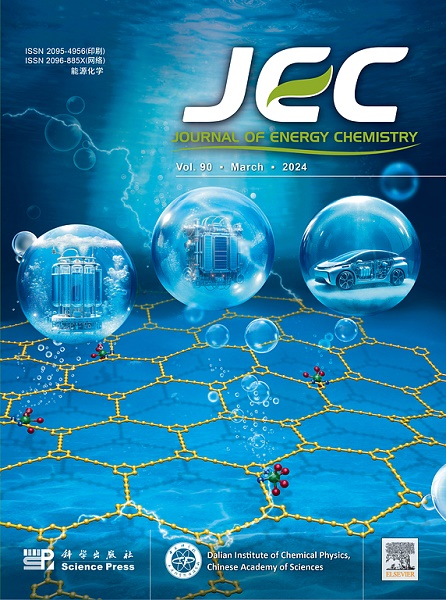Stepwise zinc deposition for high-capacity and long-life anode in aqueous zinc-ion batteries
IF 13.1
1区 化学
Q1 Energy
引用次数: 0
Abstract
Rechargeable aqueous zinc-ion batteries (AZIBs) are widely studied for energy storage because of their high safety, low cost and high energy/power density. However, the practical application of AZIBs is limited by dendrite formation at the zinc anode under high-depth deposition, which results in reduced cycle life and overall performance. Herein, we propose an effective and scalable stepwise deposition approach that integrates uniform nucleation and dense growth through the construction of ultrathin ZnO nanofiber arrays (ZONAs) on the zinc anode surface, along with the introduction of an anionic surfactant (AS) into the electrolyte. This approach yields a uniform, dense and dendrite-free Zn anode during cycling, maintaining stable cycling for 2100 h under a high deposition depth of 10 mAh cm−2 at an extremely high current density of 10 mA cm−2. Additionally, full cells using MnO2 cathodes exhibit stable cycling for 6000 cycles at 5 A g−1, with a capacity retention of 75%. Furthermore, the pouch-type cell with an area of 90 cm2 delivers a capacity of 60 mAh and maintains stable cycling for 540 cycles at 200 mA, highlighting its strong potential for scalability.

求助全文
约1分钟内获得全文
求助全文
来源期刊

Journal of Energy Chemistry
CHEMISTRY, APPLIED-CHEMISTRY, PHYSICAL
CiteScore
19.10
自引率
8.40%
发文量
3631
审稿时长
15 days
期刊介绍:
The Journal of Energy Chemistry, the official publication of Science Press and the Dalian Institute of Chemical Physics, Chinese Academy of Sciences, serves as a platform for reporting creative research and innovative applications in energy chemistry. It mainly reports on creative researches and innovative applications of chemical conversions of fossil energy, carbon dioxide, electrochemical energy and hydrogen energy, as well as the conversions of biomass and solar energy related with chemical issues to promote academic exchanges in the field of energy chemistry and to accelerate the exploration, research and development of energy science and technologies.
This journal focuses on original research papers covering various topics within energy chemistry worldwide, including:
Optimized utilization of fossil energy
Hydrogen energy
Conversion and storage of electrochemical energy
Capture, storage, and chemical conversion of carbon dioxide
Materials and nanotechnologies for energy conversion and storage
Chemistry in biomass conversion
Chemistry in the utilization of solar energy
 求助内容:
求助内容: 应助结果提醒方式:
应助结果提醒方式:


